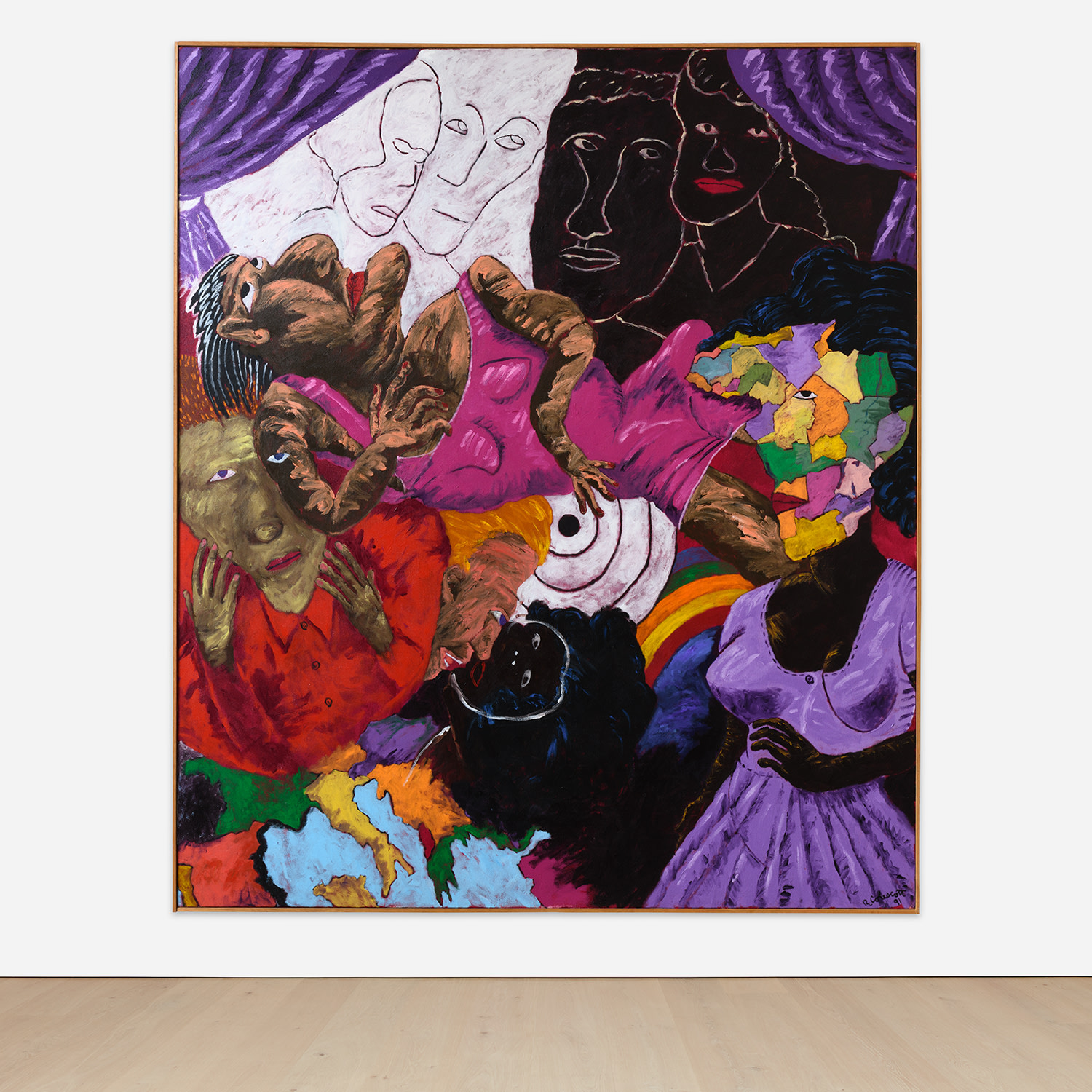



15
Robert Colescott
A Death of an Old Mulatta
signed and dated “R. Colescott 91” lower right; signed, titled, inscribed and dated ““a Death of an old Mulatta” © Robert Colescott aug. 1991 (Completed on my Birthday)” on the stretcher
acrylic on canvas
84 1/4 x 72 1/4 in. (214 x 183.5 cm)
Painted in 1991.